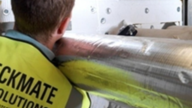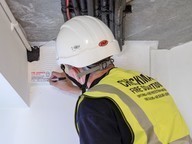What Is Passive Fire Protection?
What is passive fire protection?
It’s the built-in safety measures within a building that don’t need activating in the event of a fire. ASFP definition. According to the Association for Specialist Fire Protection (ASFP), passive fire protection is ‘built into the structure to provide stability and into walls and floors to separate the building into areas of manageable risk – compartments. These areas are designed to restrict the growth and spread of fire allowing occupants to escape and offering protection for firefighters.'

What is the difference between active and passive fire protection?
Active fire protection is a detector, which needs a ‘cue’ or a fire for it to work, which then sets off a product, such as a sprinkler or an alarm. Passive fire protection is built into the structure of the building, so functions all the time; however, it is only needed during a fire.
Why is passive fire protection important?
Protecting lives, occupants, buildings and assets, passive fire protection reduces both the spread and the risk of fire. Designed so people can escape in the event of fire, it limits damage to buildings and ultimately prevents total losses.
What is an example of passive fire protection?
An example of PFP is not just simply a product, such as a collar or a fire door, it’s the process of the product being fitted properly to the appropriate, accredited standard. Unless a correctly certified product is installed in line with scope of application by an accredited 3rd party PFP business, it won’t achieve the best results.
When is passive fire protection required?
As a preventative measure for risk, passive fire protection is always required in the appropriate buildings, but particularly at the point in which a fire is in the building.
.jpeg)
























